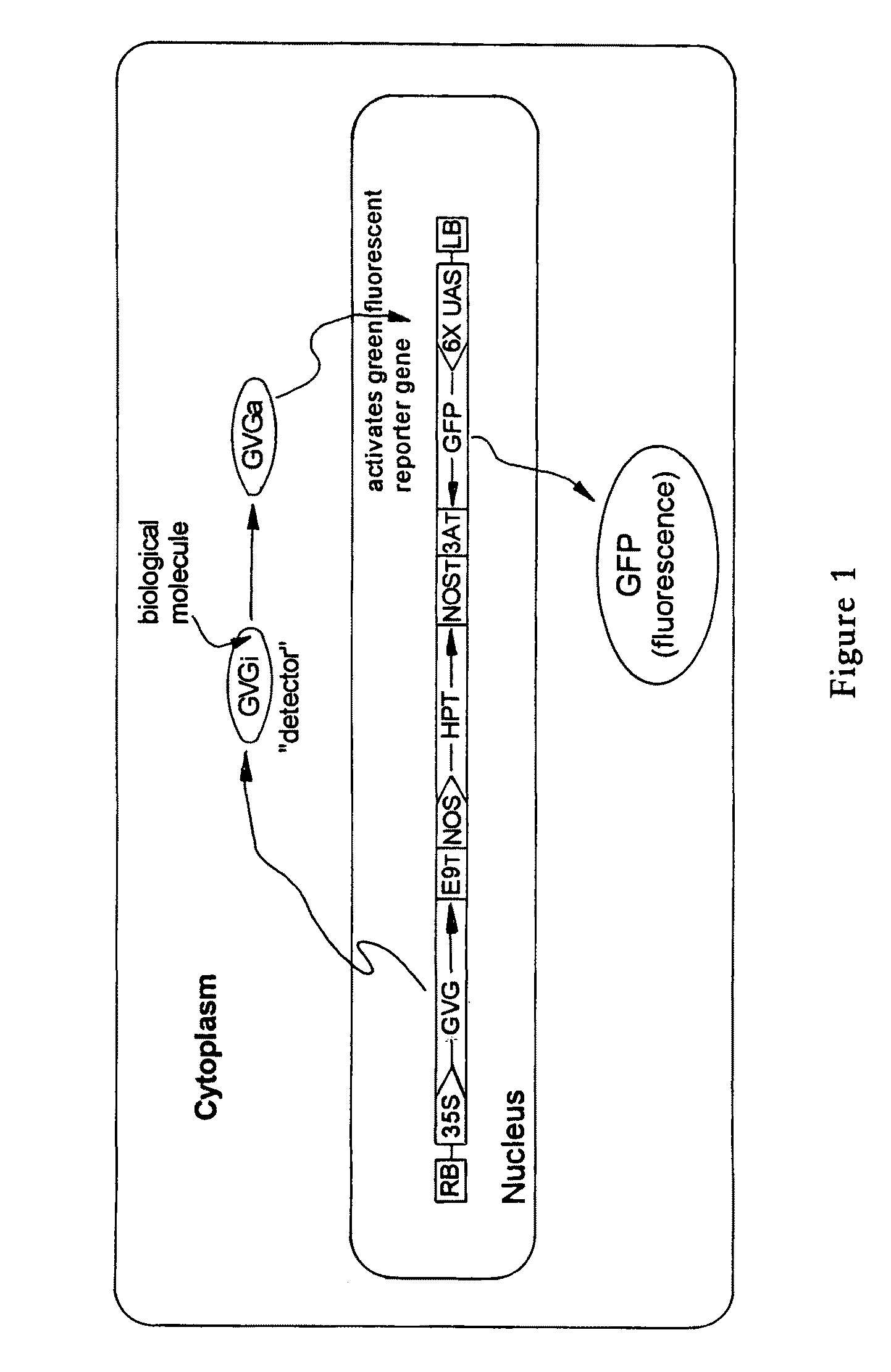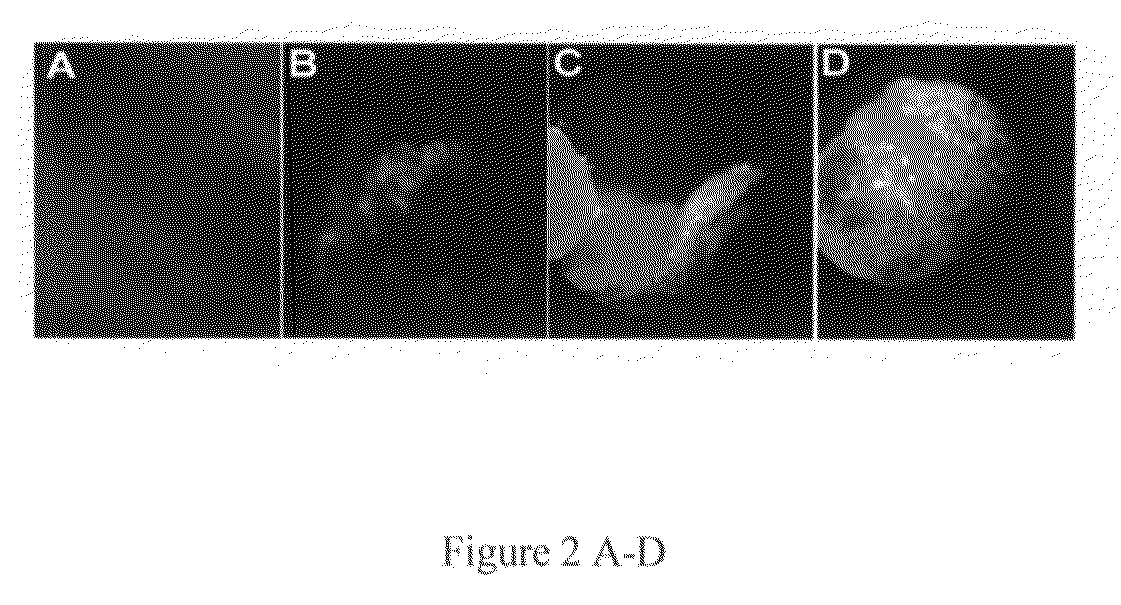Methods for screening for genes and small molecules that activate mammalian receptor proteins
a technology of receptor proteins and small molecules, applied in the field of screening for genes and small molecules that activate mammalian receptor proteins, can solve the problems of low accumulation level, transient or tissue-specific expression,
- Summary
- Abstract
- Description
- Claims
- Application Information
AI Technical Summary
Problems solved by technology
Method used
Image
Examples
example 1
Production of Transgenic NRP-GFP Reporter Lines
[0030]Using the basic “GVG” glucocorticoid system developed by Aoyama, (Aoyama and Chua 1997, Plant J. 11:605-612), a construct using the GFP version, smGFP from Davis and Vierstra (Davis and Vierstra 1998, Plant Mol. Biol., 36:521-8) (FIG. 1), worked well at the whole-plant level as detected in seedlings treated with various corticosteroid and steroid inducers (FIG. 2). This indicated that a variety of inducers lead to a level of GFP expression that can be easily detected in various plant cells. The same construct expressed in tobacco however, failed to show any detectable GFP fluorescence whatsoever. After confirming strong transcriptional induction using dexamethasone in these transgenic tobacco plants using RT-PCR, different GFP versions that permit clear fluorescence detection in tobacco tissue were evaluated. An Agrobacterium-mediated leaf infiltration method was used to efficiently screen for the most intense fluorescing GFP deri...
example 2
Design and Production of an Estrogen-NRP Reporter
[0033]There is a considerable amount of literature on the use of biosensors to detect biological compounds in the environment. One of the most relevant is the use of genetically engineered yeast cells as biosensors for the presence of environmental estrogens (Coldham et al. 1997, Environ.Health Perspect, 105:734-42) (these come from several sources including plants and pesticides). The principle is based on yeast transfected with a mammalian estrogen receptor (ER) and ER response element, and this is linked to a gene (the yeast URA3 gene) to create a positive selection system. In the presence of estrogen there is overexpression of the URA3 gene and yeast cells survive on synthetic media lacking uracil, a condition in which the background yeast strain (a uracil auxotroph) is unable to survive. The transfected yeast is thus used as a positive screen for the presence of exogenous estrogens. Since endogenous estrogens are not produced in ...
example 3
Production of a Large Population of Mutant Protoplasts from the NRP Transgenic N. Tabacum Lines by Agrobacterium-Mediated ATM
[0036]This step includes the isolation of protoplasts from the transgenic lines that express the glucocorticoid receptor-GFP reporter system i.e., the NRP transgenic lines, and transformation of these cells by Agrobacterium-mediated T-DNA transfer, for mutagenesis. Leaf protoplasts are prepared by the general method as described (Walden et al. 1995, incorporated herein). Briefly, 4-5 week old MS media-grown (Murashige and Skoog 1962, Physiol. Plant, 15:473-497) transgenic tobacco lines harboring the NRP-GFP detection system are used as a source of leaf material for protoplast isolation. Leaf pieces from sterile-grown plants are digested by overnight incubation in a 1.5% cellulase-0.5% pectinase (Sigma) mixture in plant cell culture medium (K3 media) at 26° C. in the dark. Released protoplasts are recovered by sieving through a 105 μm mesh and purified by repea...
PUM
| Property | Measurement | Unit |
|---|---|---|
| diameter | aaaaa | aaaaa |
| volume | aaaaa | aaaaa |
| volume | aaaaa | aaaaa |
Abstract
Description
Claims
Application Information
 Login to View More
Login to View More - R&D
- Intellectual Property
- Life Sciences
- Materials
- Tech Scout
- Unparalleled Data Quality
- Higher Quality Content
- 60% Fewer Hallucinations
Browse by: Latest US Patents, China's latest patents, Technical Efficacy Thesaurus, Application Domain, Technology Topic, Popular Technical Reports.
© 2025 PatSnap. All rights reserved.Legal|Privacy policy|Modern Slavery Act Transparency Statement|Sitemap|About US| Contact US: help@patsnap.com



